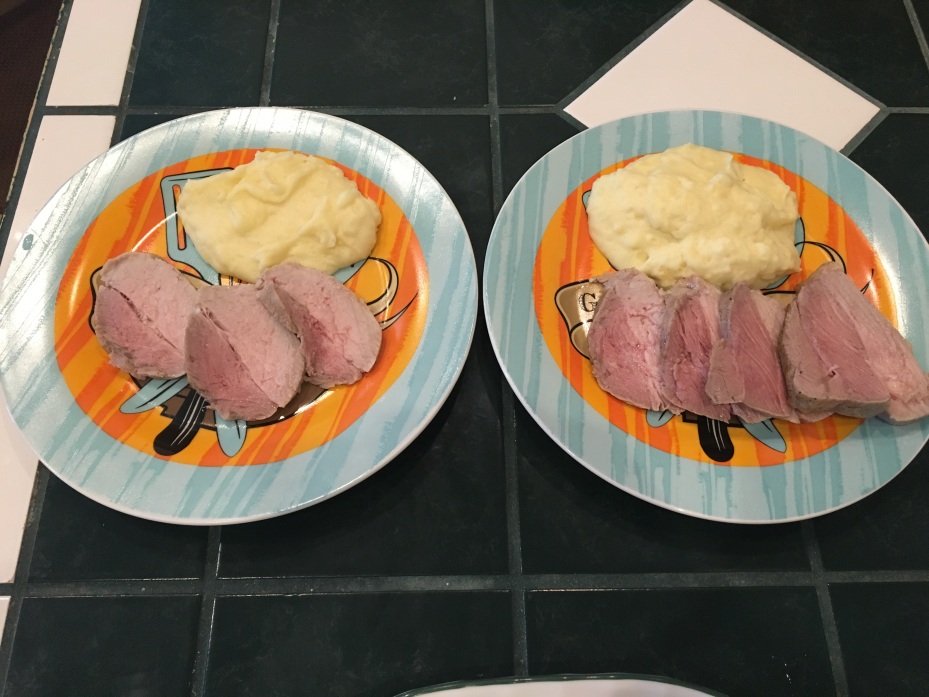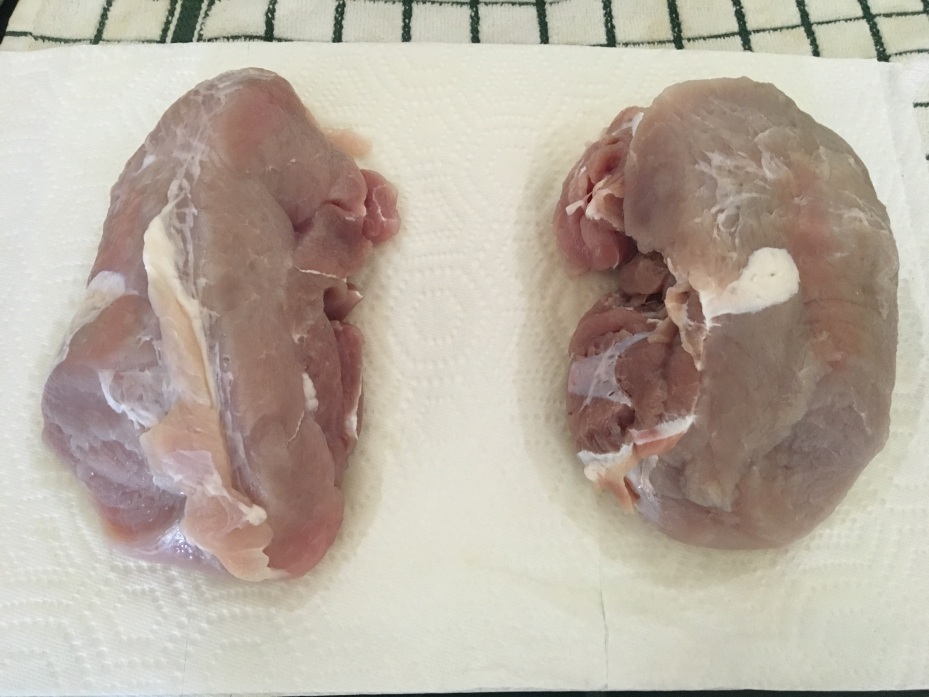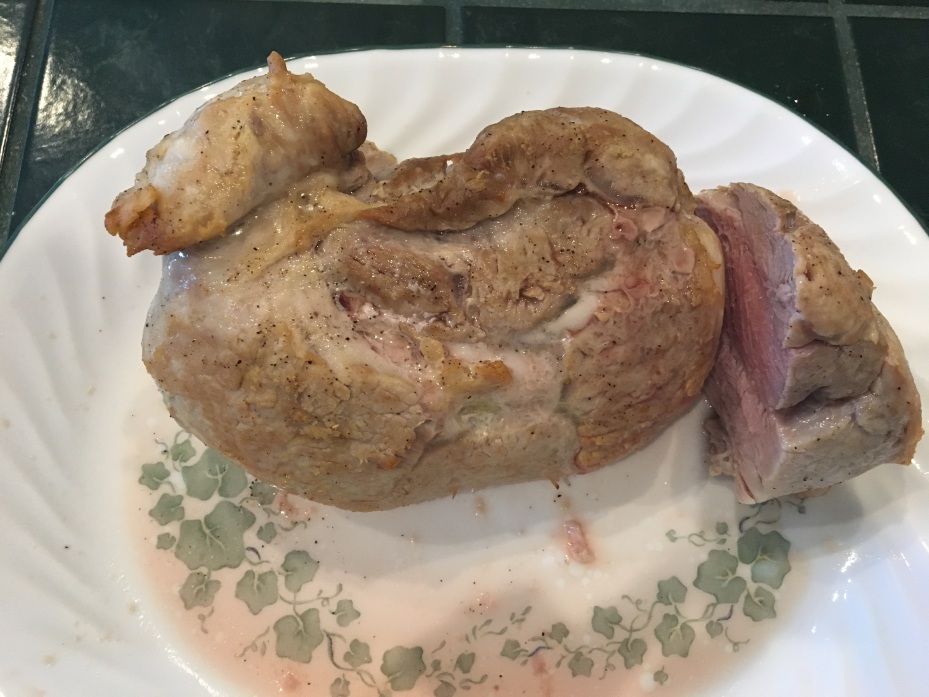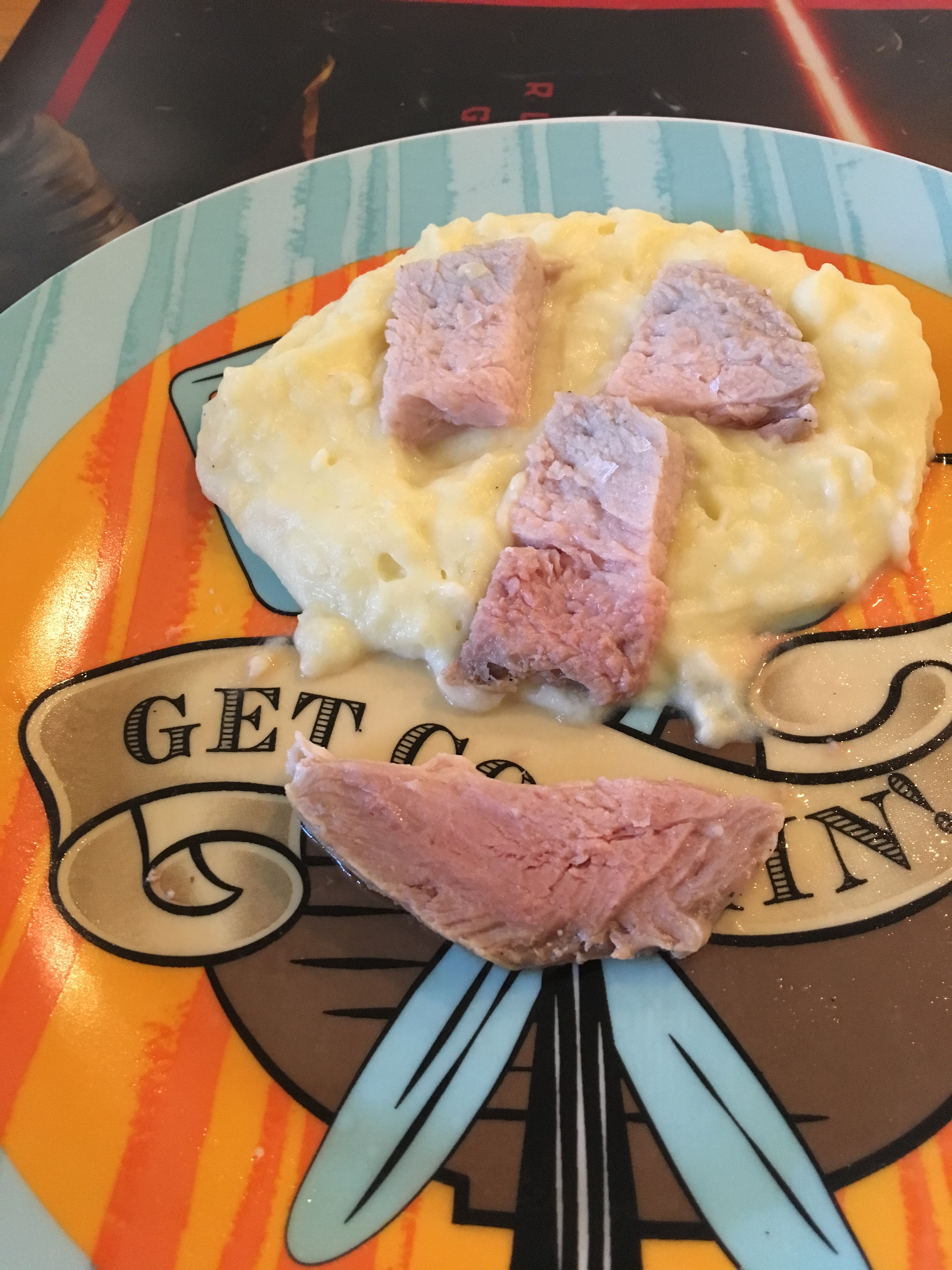I’m currently taking Thomas Keller’s MasterClass on cooking techniques.
Even though it’s not technically ‘wild’ cookery, I figured I’d share some of the excellent tips, tricks, and dishes that I’ve made, and will be making here.
The first one is not in the MasterClass and is something I whipped up myself after scouring the net on a ‘how to’ properly brine a pork roast. After sifting through a bunch of garbage, I found a simple way that works, which I’ll be sharing with you below.
Tonight’s supper:

Brined Pork Roast and Mashed Potatoes. Reviews: “Succulent.” “Delicious!” “The best pork I’ve ever had!” And my favorite from my daughter: “Even better than the eggplant and garlic confit!” High praise, as that was her favorite dish ever before this. 😀
Everyone has their own way of doing this, this is what works for me. Feel free to adjust any recipe to your own preferences, as they are general guidelines only.
Everyone can figure out the mashed potatoes part with a simple internet search, so I’m just going to roll with the brined pork.
You will need:
(Brine stage)
A pork roast
1 gallon of cold water
1 dry measure cup of kosher salt
A big fricking mixing bowl and lid/plate to cover it. OR Aluminum foil.
A wooden spoon
Instructions:
This is going to brine for ten (10!) hours. Plan accordingly.
Pour the gallon of cold water into the mixing bowl, then dump the cup of kosher salt into it.
Stir until it’s 100% dissolved. If you have a kid who likes to help you cook, they’re great for this whilst you do other prep. Just have them stir SLOWLY.
Take something slim and pokey (a meat thermometer works great for this) and perforate the hell out of your pork roast on all sides, penetrating at least halfway though the meat. If you don’t have at least 50 holes on each main side of the roast, you aren’t trying hard enough.
Cover the top with lid/plate/aluminum foil.
Wait 10 hours. If you eat supper at 5 PM, yer gonna want to brine this about 6 AM.
You’ll need that extra hour for other prep.
(Cooking stage)
A 10” skillet or frying pan
Canola oil
Kosher salt
Cracked black pepper.
A roasting pan and roasting rack (A cookie sheet and cooling rack inside the cookie sheet work great for this!)
Preheat the oven to 350 degrees Fahrenheit/177 degrees Celsius.
Coat the bottom of your frying pan in a thin layer of canola oil, and set to medium high.
Heat until the oil reaches the smoke point.
Put some paper towels down on a cutting board.
Pull the roast out of the brine, rise thoroughly in cold water, then place on the paper towels, and pat dry with other paper towels. Move the roast to a plate to stage it, and replace the now soaked paper towels on the cutting board with new ones, and replace the roast on the cutting board on the new paper towels.
Let the roast set for 1 hour to come to room temperature. This is VERY important for even cooking and no weird under cooked spots in your roast.
(1 hour passes…)
Remove the paper towels from the roast, pat dry again with a new paper towel.

Place the roast directly on the cutting board and season lightly with a dusting of kosher salt and cracked black pepper.
By now your oil should be hot and almost smoking.
Carefully put the roast into the pan and sear it. This will only take a few minutes. Flip it over and sear the other side.
(Searing the meat will lock in some of the moisture when you roast it, as well as make a lovely outer finish on the roast.)
When it’s seared, move the roast from the frying pan/skillet into the roasting pan and then into the oven it goes.
Depending on the size of the roast, you’ll need to adjust the cooking time.
The FDA changed their pork safety guidelines quite a few years ago from 160 to 145. I typically cook it to 150, though that may be more than necessary. It’s lovely at 135 too.
We’ve all been eating overcooked tough pork all our lives, and it’s such a wonderful meat when properly prepared.
I made two roasts and one was significantly smaller than the other. The smaller was done at 35 minutes, the larger at about 50 minutes, with an internal temp of 150. Be sure to stick the thermometer into the largest portion of the meat.

It’s pink, and it’s supposed to be! It’s also tender, juicy, and delicious. As long as your meat thermometer read 145 degrees, you are 100% safe. Enjoy pork as it was meant to be enjoyed… juicy and delicious.
Plate and enjoy!
Or, if you’re like my daughter, have fun with your pork and potatoes!

More to come soon!
As always, I can be reached at Wildcookery@yahoo.com
















